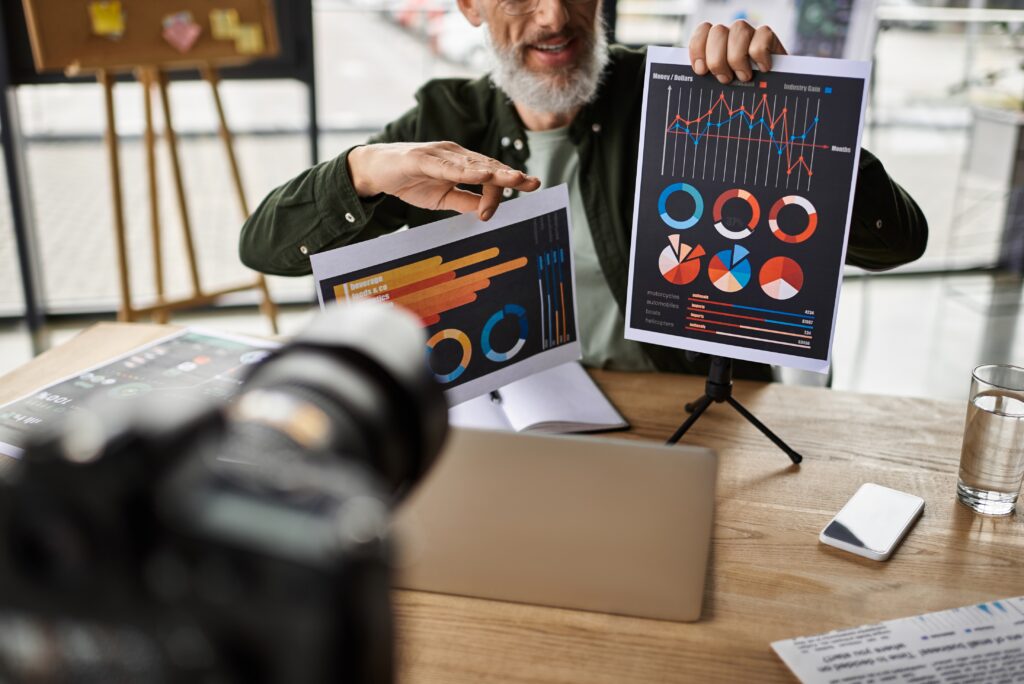Content optimization services refine what is already there—turning blogs, landing pages, and product descriptions into high-performance assets that rank higher, engage deeper, and convert better. In 2025, winning SEO means blending traditional tactics with AI SEO, GEO, and AEO.
At Flying V Group, we master this balance, crafting strategies that please both algorithms and people.
We know search visibility is not just about keywords—it is about delivering value faster and smarter. Whether you need sharper headlines, smarter keyword placement, or content tuned for AI-driven engines, we are ready to make your brand impossible to ignore.
- Selection Criteria for Effective Content Optimization Providers
- Flying V Group – Strategic Content Optimization Partner
- Seven Other Top Content Optimization Services in 2025
- How These Services Elevate SEO Results in 2025
- Choosing the Right Content Optimization Service for Your Goals
- Keep Climbing the Rankings
- FAQs
- 1. What is content optimization, and why is it crucial for SEO in 2025?
- 2. How do AI tools enhance content optimization services?
- 3. What are the key components of effective content optimization?
- 4. How does content optimization differ across industries?
- 5. Can content optimization services help with voice search optimization?
Selection Criteria for Effective Content Optimization Providers
When you’re looking for the best content optimization services, the choice can make or break your performance in search. You want providers that go beyond surface tweaks and truly elevate existing assets. Here are the criteria we use to evaluate partners:
Technical SEO proficiency
Effective optimization starts with a solid technical foundation: thoughtful on-page structure, mobile responsiveness, fast loading speed, accessibility features, and schema markup. These details matter because Google and AI engines favor content that’s both user-friendly and machine-readable.
AI-driven tools expertise
The modern toolkit includes AI for content scoring, semantic analysis, topic clustering, and relevance grading. The best providers know how to leverage these tools—not just to replace human judgment, but to augment it with actionable insights.
Results in generative search visibility
Search has evolved. Optimizing for AEO (Answer Engine Optimization) and GEO (Generative Engine Optimization) means crafting content that AI assistants and search overviews cite—whether in voice, chat, or AI-generated answers.
Providers should understand how to structure FAQs, use schema headers, and craft clear, authoritative responses that get featured.
Content refresh strategies
Aging content loses relevance, even if it ranks well. Good providers plan for periodic refreshes—improving structure, updating stats, A/B testing titles, and calls to action. It’s not one-and-done; it’s a cycle of keeps, consolidates, updates, and archive decisions.
Integrated analytics & iterative optimization
Optimization doesn’t end at launch. Providers must track performance using analytics, measure engagement metrics, monitor rankings, and adjust copy or structure based on real user behavior. Iteration over time leads to upward trends in traffic, CTR, dwell time, and ultimately conversions.
Flying V Group – Strategic Content Optimization Partner
We at Flying V Group pride ourselves on being an optimization partner, not just a vendor. We want your content to evolve—strategically, sustainably, and visibly.
- SEO performance audits and content benchmarking
We review current rankings, content gaps, load times, and mobile performance. We benchmark your content against competitors and search intent. - AI-enhanced suggestions for structure and relevance
We use AI tools to recommend keyword clusters, outline improvements, readability enhancements, and semantic enrichments. - Implementation of schema, long-tail phrases, and snippet targeting (AEO/GEO)
Our optimization includes structured markup, conversational copy tuned for voice and AI assistants, and content that aims for featured answer and overview placement. - Clear reporting and ongoing optimization loops
You get dashboards and simple reports—not just raw data. We meet regularly to assess trends, refresh priorities, and plan the next round of improvements.
Outcome
The result: boosted organic traffic, lower bounce rates, longer session times, and more conversions—driven by smarter, evolving content that adapts to both Google and AI engines.
Seven Other Top Content Optimization Services in 2025
While we provide a strategic, tailored approach at Flying V Group, there are other strong players in the market offering content optimization services that can make a big impact in 2025. Each service has its own strengths, from advanced AI-powered tools to deep editorial insight. Here’s a closer look.
1. Surfer SEO
Surfer SEO has become a favorite among marketers because it blends data-driven analysis with practical recommendations. It allows users to run content audits, compare their pages with top-ranking competitors, and get clear action steps to improve keyword use, internal linking, and structure. Its keyword clustering tools also make it easier to target multiple related queries in one piece of content.
2. MarketMuse
MarketMuse stands out for its topic modeling and semantic analysis. It helps brands identify coverage gaps and provides AI-backed outlines that ensure depth and authority. By mapping keyword themes and related concepts, it guides writers toward building content that both users and search engines trust. In 2025, this makes it especially valuable for industries with high competition.
3. Semrush Content Writing & SEO Toolkit
Semrush remains a full-suite solution for SEO, and its content optimization features are no exception. The toolkit offers topic research, on-page recommendations, snippet targeting, and performance monitoring in one place. Many businesses use it to keep content updates, SEO, and competitor analysis running in a single workflow, which saves time and resources.
4. Clearscope
Clearscope focuses heavily on real-time optimization. As you write, it suggests terms, related topics, and readability improvements based on the highest-ranking pages for your chosen keywords. This instant feedback is a big plus for teams that want to optimize content as it’s being created, rather than retrofitting changes later.
5. Alli AI / AI EngineBoost
Alli AI and similar platforms like AI EngineBoost automate large portions of the on-page SEO process. They can analyze hundreds of pages at once, make keyword placement suggestions, adjust internal links, and recommend schema markup. For companies managing large websites, this kind of automation means faster turnaround times and consistent optimization across the board.
6. Contently
Contently is known for high-quality editorial production, but it also integrates content performance tracking and optimization. Businesses using Contently get access to vetted writers, editors, and strategists, along with AI-driven analytics that highlight opportunities to refresh or expand existing material. This blend of creativity and technical insight makes it an appealing choice for premium brands.
7. Tools Leveraging AEO and GEO Strategies
In 2025, Answer Engine Optimization (AEO) and Generative Engine Optimization (GEO) are essential for visibility in AI-driven search. Some agencies and tools now specialize in structuring content so that it appears in AI-generated answers, conversational queries, and voice assistant responses. These services focus on schema, concise answers, and high-authority formatting to boost placement in these new search formats.
How These Services Elevate SEO Results in 2025
Getting content right today means mastering both search engines and AI-driven discovery. Here’s how these services deliver:
- Boost rankings in traditional and AI search
You not only climb SERPs but also gain visibility in AI assistant responses, voice search, and chatbot answers. - Ensure AI presence via AEO/GEO success
Your content gets featured, quoted, or summarized by AI platforms—putting your brand front and center without extra clicks. - Earn longer user attention and better conversions
Analytics-informed tweaks improve dwell time, CTR, and the path toward conversions. - Leverage structured content for featured snippets
Clear headings, schema, and Q&A structure increase chances of zero-click placements and voice response generation.
Choosing the Right Content Optimization Service for Your Goals
Here’s how to make the right choice based on what matters most:
- Clarify your objectives
Are you targeting hands-free voice search, authority in a niche, or better UX for mobile? Let those goals drive your selection. - Check compatibility with your systems
Whether it’s CMS integration, analytics dashboards, or reporting tools, make sure the provider fits your ecosystem. - Look for hybrid strengths
Aim for providers who combine technical SEO with creative strategy—not just tools or studios, but both. - Prefer iterative delivery models
Those who optimize in phases, review metrics, and adapt are more effective than one-time audits. - Choose a seamless growth partner
Pick a provider that aligns with your brand voice, timing, and growth trajectory. We’re here to integrate with your team and elevate your content consistently—from optimization to execution.
Keep Climbing the Rankings
Choosing the right content optimization services can make all the difference in 2025—especially with AI reshaping how search works. At Flying V Group, we don’t just edit content; we transform it for visibility, clarity, and action.
Whether we’re enhancing user experience, refining SEO strategies, or leveraging generative optimization (GEO), we ensure your content is ready for today’s fast-evolving search landscape. Partner with us, and your site won’t just appear—it will perform.
FAQs
1. What is content optimization, and why is it crucial for SEO in 2025?
Content optimization involves enhancing website content to improve its visibility and ranking on search engines. In 2025, with evolving algorithms and user behaviors, optimized content ensures better user experience, higher engagement, and increased organic traffic, making it essential for effective SEO strategies.
2. How do AI tools enhance content optimization services?
AI tools analyze vast data sets to identify content gaps, suggest relevant keywords, and predict user intent. By leveraging AI, content optimization services can create more targeted, personalized, and effective content strategies, leading to improved SEO performance and user engagement.
3. What are the key components of effective content optimization?
Effective content optimization includes keyword research, meta tag enhancement, content structure improvement, internal linking, and ensuring mobile-friendliness. Additionally, regularly updating content to reflect current trends and user intent is vital for maintaining and improving SEO rankings.
4. How does content optimization differ across industries?
Different industries have unique audiences and terminologies. Content optimization services tailor strategies to align with industry-specific keywords, compliance requirements, and audience expectations, ensuring that the content resonates with the target demographic and adheres to industry standards.
5. Can content optimization services help with voice search optimization?
Yes, content optimization services adapt content to align with natural language queries used in voice searches. By focusing on conversational keywords and question-based content, they enhance visibility in voice search results, catering to the growing number of voice-assisted searches.









0 Comments